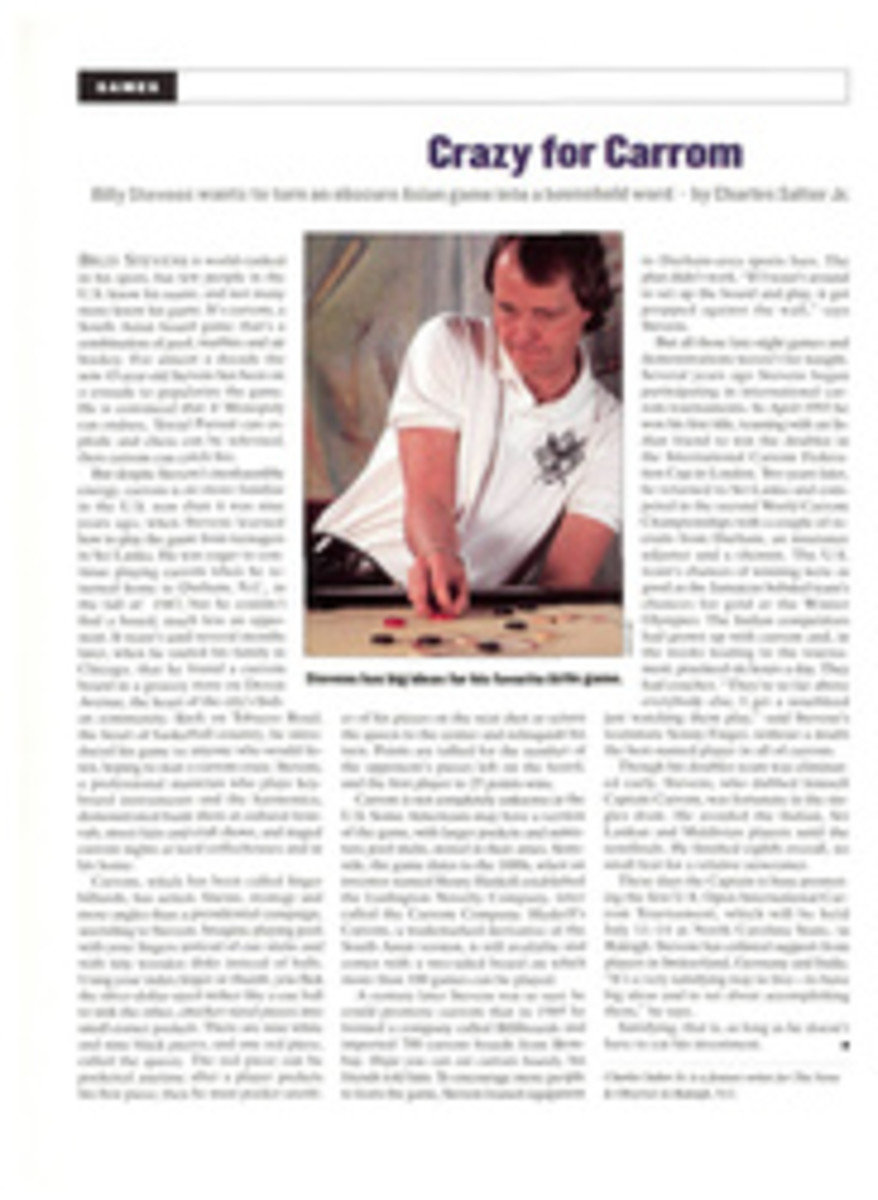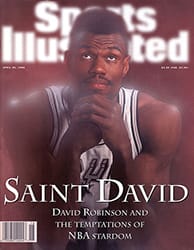
EVERYBODY'S HITTING HOMERS THESE DAYS, BUT WHO'S SETTING THE TABLE? O'S BLOWS AND O'S WOES TROUBLE IN K.C.
THE SWING ERA
Detroit's Cecil Fielder, who lost some weight in the off-season,
is off to his best start, having hit nine homers in his first 20
games. The Tigers first baseman had never before hit more than
seven homers in April; now he is threatening the major league
record of 11 first-month homers held by Graig Nettles, Mike
Schmidt and Willie Stargell. "Cecil is a pure home run hitter,''
says White Sox first baseman Frank Thomas. "That's what he does:
hit homers.''
That may sound like a compliment from Thomas, but it's possible
to infer a hint of criticism. When Fielder hit three homers
against Toronto on April 16, he raised his average from .189 to
.228. He also ran his season hit total to 13 at the time: nine
homers, two doubles and two singles. Thomas, on the other hand,
wasn't generating as much interest with his seven homers at
week's end, but he was hitting a robust .397--best in the
American League.
This is not to single out Fielder for criticism, but there's no
denying that there is an all-or-nothing, go-for-the-fences trend
in today's game. Fielder makes an astonishing amount of money--at
$9.2 million, he's the highest-paid player in the game this
year--yet he's slow on the base paths and doesn't hit for
average. And that lesson is not lost on a lot of other players.
Too many hitters today just swing as hard as they can most of
the time, which produces some big home run totals but can also
result in low batting averages and a huge number of strikeouts.
The reason for this: Those high homer totals pay off with large
contracts, especially in arbitration. But the art of hitting has
suffered as a result. If you look at a list of all the players
who have hit 30 homers in a season and then look at their
batting averages, 16 of the 20 lowest averages have come since
1982--and in 14 of those 16 cases the hitter struck out more than
110 times.
That go-for-broke attitude is trickling down to players who have
no business trying to hit homers. Among the league leaders in
strikeouts this season are a frightening number of leadoff
hitters who should be putting the ball in play and getting on
base any way they can. Randy Velarde (20 K's through Sunday) and
Chad Curtis (18), the leadoff hitters for the Angels and the
Tigers, respectively, are on pace to strike out more than 144
times this season, as are the Padres' Rickey Henderson (16) and
the Reds' Vince Coleman (19). But the worst culprit is Dodgers
second baseman Delino DeShields, who at week's end had already
gone down on strikes 21 times in only 19 games. That's
unacceptable for a player whose greatest asset should be his
speed.
As bad as the pitching is, and as many homers as there are
flying over the walls, the RBI leaders in baseball aren't
knocking in impressive numbers of runs these days. No one has
come close to threatening Hack Wilson's major league record of
190 RBIs in 1930 or Lou Gehrig's American League mark of 184 in
1931. The last player with 150 or more was the Dodgers' Tommy
Davis (153) in 1962, and the league leaders have reached 140
RBIs only four times since then. Maybe it's because the table
setters are too intent on going deep like the power hitters,
rather than simply getting on base so they can wait at home
plate to shake hands when the big guys knock them in.
BRADY BUNCH
One leadoff hitter who is swinging for the downs and doing quite
well, thank you, is Baltimore's Brady Anderson. On Sunday the
Orioles' outfielder hit his fourth straight first-inning leadoff
homer, which is believed to be a major league record. At week's
end Anderson was tied for second in the league in homers, with
eight, but he was still batting a stellar .354 (with 10
strikeouts) and had a .443 on-base percentage.
A ROYAL MESS
Having had a chance to watch Kansas City play a few times, one
veteran scout says shortstop Jose Offerman and second baseman
Bip Roberts might eventually go down as the worst double-play
combination of all time. As a team the Royals are currently next
to last in the league in fielding (21 errors in 18 games through
Sunday), and a big reason is the defense up the middle. Offerman
was finally benched for five games last week after committing
four errors in his first nine games. He was back in the lineup
last Saturday and promptly made another error.
Granted, the Royals are a small-market team with budget
limitations, but one still has to wonder what exactly the K.C.
front office was thinking when it put together this team. The
Royals had one of the game's top defensive infields a year ago
but let third baseman Gary Gaetti and shortstop Greg Gagne sign
as free agents with the Cardinals and the Dodgers, respectively,
and they traded first baseman Wally Joyner to the Padres for
Roberts. They also traded for Offerman and installed rangeless
Bob Hamelin at first and a platoon of Keith Lockhart and Joe
Randa at third. Now they have the worst defensive infield in the
game.
AFTER THE DELUGE
The Orioles had to feel pretty good about their pitching staff
going into last Friday night's game against the Rangers. They
had a 3.00 ERA, which ranked first in the American League, and
their bullpen had allowed only five earned runs in 37 2/3
innings. After Texas beat them 26-7 (all of those runs were
earned), the Orioles had only the fifth-best ERA in the league,
at 4.50.
In the eighth the Rangers scored 16 runs--the second-biggest
inning ever--as Baltimore hurlers threw 99 pitches, enough in
some cases for a complete game. It got so bad that Baltimore
reserve infielder Manny Alexander was called on to pitch. He
gave up only one hit in two thirds of an inning, but he also
walked four, and the one hit was a grand slam by Rangers
shortstop Kevin Elster. "There are some great pitching
Alexanders in baseball history: Grover Cleveland Alexander,
Doyle Alexander and now Manny Alexander,'' said former Orioles
pitcher Mike Flanagan, who's a broadcaster with the team. "But
[Manny's] going to have to break out the [batting-practice]
pitching screen.''
SHORT HOPS
The Dodgers have bad news for the rest of the National League:
Farmhand Darren Dreifort's fastball was clocked between 95 and
97 mph last Thursday in a Triple A game for Albuquerque.
Dreifort made his big league debut in 1994 and exhibited
terrific stuff until he injured his elbow, which forced him to
undergo surgery in March '95. He missed all of last season, but
it looks as if he may have regained his early form. If he's
ready to join the Dodgers in June or July, they are going to
have a staff loaded with power pitchers--including starters Ramon
Martinez, Hideo Nomo and Chan Ho Park--plus a knuckleballer, Tom
Candiotti, thrown in to make it tougher for batters to find
their timing.... Early leader to be the manager of the expansion
Tampa Bay Devil Rays when they begin play in 1998: Braves third
base coach Jimy Williams.... A's pitcher Todd Van Poppel,
Oakland's first-round pick in the 1990 draft, is likely on his
way to the bullpen, still looking very much like a major bust.
Many tall, straight-over-the-top pitchers such as the 6'5" Van
Poppel throw a ball with little movement, which makes it very
hittable. Van Poppel got shelled again last Saturday, raising
his ERA to 9.95.
COLOR PHOTO: BRAD MANGIN Fielder could be off to the hottest start in homer-hitting history ... [Cecil Fielder]
B/W PHOTO: NATIONAL BASEBALL LIBRARY ... but he probably won't match Wilson's record 190 RBIs.[Hack Wilson]

